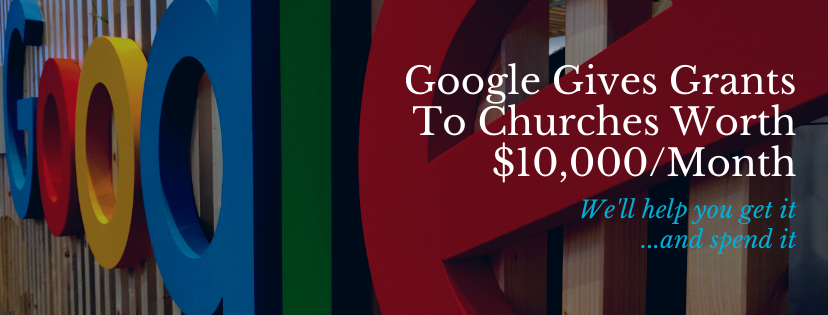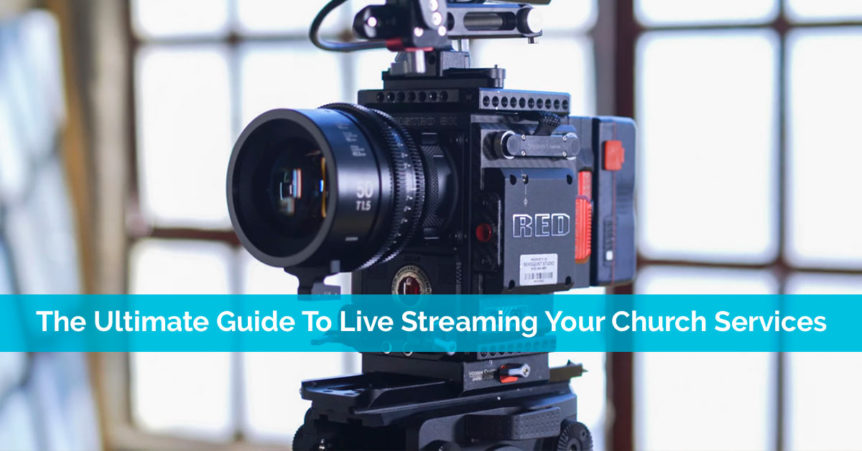What happens when members can’t come to
By live streaming your church services, members are always able to attend, even if they’re sick, traveling for work or staying home with their new child.
Of course, live streaming also gives you a chance to increase your online membership as well. The good news is it’s cost-effective and allows you to reach more people.
Table of contents
Things To Keep In Mind
Before you start live streaming your church services, you should think about costs, how participants feel and whether live streaming is even right for your church.
The cost varies greatly and the good news is it doesn’t cost much at all to get started. We’ll cover more on costs later.
Something that many people never talk about is how church leaders, choir members, band members and just members in general feel about having themselves streamed online. Even the most confident pastor might feel insecure in front of the camera. It’s important to discuss this with everyone to ensure they’re okay with it.

Finally, is your church live streaming for the right reasons? According to Livestream, 2,778 houses of worship throughout 59 countries used Livestream to stream their services online. Despite those high numbers from just a single live streaming platform, your church shouldn’t do it just because it’s popular.
Your church should only invest in live streaming if:
- Your members will find it beneficial
- You want to expand your church’s reach
- It won’t strain your church’s budget
- It’ll help you reach specific church goals
While Livestream found that one church’s online donations increased by 70% after live streaming services, every church can’t expect the same results.
In fact, a brand new church might find it more beneficial to simply upload sermons on their website to build a following before
- Why do you want to do it? (“because others are,” isn’t a good answer
- Can anyone successfully lead this project right now?
- Is live streaming able to make your church better?
The key is to set goals and know how to measure them to see if
Setting Your Expectations And Goals
Before you even buy the first piece of equipment, set realistic expectations and goals. Why? You need a way to measure how well live streaming your church services is working for your church.
For instance, do you want to expand your reach from 100 members to an additional 1,000 online viewers each week? Maybe you want to increase online tithing by 15%. Perhaps, you’re looking to increase engagement with your current members.
Whatever your goals are, set them before you start live streaming. Church Production talks about the importance of using analytics to determine the ROI of living streaming. By setting goals, you’re able to determine how valuable live streaming actually is for your church’s needs.
How Much Should You Invest
This is the hardest question to answer for any church. The truth is you can actually start with nothing but a high-end smartphone and a free live streaming platform. Odds are, one of your church leaders probably has the latest iPhone, Samsung or something similar.

While it’s not always easy to get the setup just right, it is possible and ideal for smaller churches that don’t have a much of a budget for video production.
If you’re completely new to live streaming, you shouldn’t make a major investment. Right now, you just want to see how well received the idea is before investing thousands.
Ideally, start with a free platform and a lower cost camera. Some businesses may offer your church a free camera (it may be an older model, but still highly effective) or a discount since you’re a nonprofit. It never hurts to ask. The camera will be your biggest cost, but it’s a one-time cost, so that helps.
Starting out, you can start live streaming your church services for less than a few hundred dollars. Or, if you want to go all out on audio and video equipment, you could easily invest thousands initially for equipment. After that, all you have to do is pay for your live streaming platform.
Choosing The Right Camera
The camera is the most important piece of equipment. After all, without a camera, there’s nothing to broadcast. However, you have quite a few different types of cameras to pick from, such as:
- Webcam
- DSLR
- Camcorder
- Action camera
Of course, there are also cameras that are specifically listed as live streaming cameras, which are also a great choice.
A webcam is tricky to work with as you’ll need to have it connected to a laptop or desktop. That can get in the way of the pastor for members who are physically in the church at the time. However, they’re one of the cheapest options.
A DSLR camera is designed for high-quality photo and video. This is the type of camera that most professional photographers prefer.
Camcorders are designed specifically for shooting video, so they’re an obvious first choice. Ideally, you’ll want one with Wi-Fi and/or HDMI capabilities for best results.

Action cameras are designed for more active live streaming. For instance, if the pastor moves around often or you’ll have someone walking around with the camera during the live stream, you’ll get the most stability from an action camera.
You’re probably most concerned about pricing and features. Pricing for the above types of cameras ranges anywhere from under $100 to over $2,000. Remember, you don’t have to go with the most expensive or fanciest. Get what’s right for your church.
Be sure to read our post on the 7 Best Cameras for Livestreaming Church to find the right camera for your services.
Essential Lighting Tips
Even with the best camera, your video won’t look its best without the right lighting. If it’s too dark or too bright, viewers might get so distracted that they don’t even hear what your pastor has to say. That’s definitely not what you want to happen!
The hard part is figuring out the difference between what your eyes see and what the camera sees. While you might see the pastor perfectly with just natural lighting and small lamps to either side of the pulpit, the camera just sees the dim shape of a person.
Instead, try a technique called three-point lighting. This effectively lights the subject of your video without shadows. A backlight and two lights in the front at 45 degree angles drastically change what the camera sees. You’ll have to play around with the brightness a bit to get everything just right.
If you’ll be live streaming more than just your pastor, you’ll need to install adjustable lighting or multiple areas of lighting that you can control from a single computer or tablet.
Other Must-Have Tools
Depending on how elaborate live streaming your church services might be, you may also need to invest in audio equipment. If all you’re streaming is your pastor and maybe the choir behind them, you may be able to get away with just the microphone on your camera.
Otherwise, you’ll want to invest in microphones that feed back into your camera. For more complex setups, you’ll likely need multiple wireless microphones that connect back to your camera via a main audio/video controller. This can be a laptop or tablet with the necessary software installed.
Mic Reviews lists 10 great wireless microphone sets perfect for live streaming.
Encoding Your Stream
Unless you have a camera that already has a built-in video encoder (costs more, but is incredibly convenient), you’ll also need a video encoder. Encoders come in two forms – physical piece of equipment or software.

While Boxcast has obvious reasons for promoting the hardware version (they make a video encoder box), the company does provide great reasons to opt for the hardware version, such as:
- Less bandwidth
- Easier to configure
- May sometimes be cheaper (one-time fee versus charges per video)
However, the software version can be just as effective. If you’re subscribing to a live streaming platform and use their software, you might be charged based on the length and number of services you stream. Others charge a flat-rate. For stand-alone encoder software, pricing varies greatly from under $100 to over $1,000 for premium features.
Using Live Streaming Platforms
Once you’ve gotten your equipment together, it’s time for the final major step – choosing your live streaming platform. You’ll need a platform in order for people to view your services online.
If your church as a website, you can design an area of your site for live streaming. You’ll likely have to pay more for your website hosting as live streaming does use much more bandwidth than a standard church website. However, this keeps all of your content on your church site.
If you don’t want to use your church’s website or you just want to use a service dedicated to live streaming, you’ll need to carefully compare services to determine what pricing structure and features work for your church.
When it comes to major live streaming options for churches, you have several platforms to choose from including:
- Boxcast – Starts at $99 per month
- Livestream by Vimeo – $75 per month
- TruthCasting – Starts at $40 per month for small churches
- Christian World Media – Starts at $15 per month
- DaCast – Starts at $39 per month
- StreamingChurch.tv – Starts at $79 per month
- Worship Channels – Starts at $99 per month
- Church Online Platform — FREE (Does not embed on your website)
It is worth noting that these services may have their own specialized equipment to make live streaming easier for your church. Equipment through these providers may cost less than buying it on your own. Some offer free trials to help you compare services.
Free Versus Paid Options
All of the above are premium options. However, you do have a few free options, but they’re not mainly for churches, though. While there are more free options available, the two most relevant for your needs include Facebook Live and YouTube Live.
Facebook Live allows you to set up live streaming events, including live streaming your church services. It’s free to do so and if you already have a large Facebook following, it’s a great option. You can live stream using your phone or any other type of camera.
YouTube Live works similar to YouTube, except videos are broadcast live. You have to have an account in good standing before you can get started, though.
Overall, you’ll get more dedicated support with paid services. However, if you’re just getting started and want to save money, free services work well. They’re also ideal if you have a following on Facebook or YouTube. If nothing else, free platforms are a great way to test the waters before investing in premium services.
Other Considerations
There are few others things to keep in mind when live streaming your church services. First, always mention the option to tithe online. This might include mentioning your church’s website URL, providing a text message number or having a button your live streaming profile.
You’ll also want to market your live stream. The object is to get people to actually view your services. Talk about it on your church’s website, blog and social media channels. Don’t forget to tell your members about it too!
Ready to start live streaming your church services? Before you do, make sure you have an engaging church website in place to market the stream and/or host the stream.





Comments 25
Great post! As a church leader, I’m always looking for ways to enhance our live streaming services. The tips you provided on lighting, sound, and internet connection are super helpful. I’m definitely going to try out the suggested software for live streaming. Thanks for sharing!
God is so great! Thank God for online services and masses from churches near me like mine that truly reach out to all of us through all available media!
Is it necessary to use One Drive and any of the Microsoft or Google accounts to live stream? We have a person who live streams. He insists he must use a Microsoft account.
our church is moving from online to in-person but we are still going to be steaming. What are some ideas to do / use, while going live, in between when one person finish on the pulpit and walks off as the next person walks up and get situated to speak? Say for instant when the deacon finish with offering, then leaves. Next is the choir or praise team. What can be done to make this a smooth transition as our online viewers watch? Hope this makes sense. thanks for any help you can give.
Great list and info for all sizes of churches. I would like to suggest that you consider adding SwitcherStudio to the list. It’s a platform that uses strictly iOS devices (Apple) as camera and controller which many people already have. AND you can connect up to 9 cameras at one time as well as bring in the feed from your computer to show ProPresenter slides. We’ve been using it for over a year (https://www.youtube.com/watch?v=HqqgVjKDqug) and we love it!
Author
We’ll check it out. Thanks, Lisa!
I have heard a few names you listed here, you might add Dreamcast as well in the list, their live streaming services are top-notch.
I came here from Google, looking for info on church streaming setups, and it seems like either your website lifted this content from Vanco, or they lifted it from you. In either case, that’s not a great look.
https://www.vancopayments.com/egiving/blog/church-live-stream-setup
Author
Thanks for the heads up. We published this post in early 2019 so it looks like they spun our content and republished it. We will reach out to them and ask them to make it right. Until then, we will consider it the sincerest form of flattery. Thanks for letting us know!
Keep up the good work! Live streaming for churches is a recent trend that is gaining momentum across a range of channels. This article is vital for any church who wants to test out this technique.
Thank you for this article. We have been using Zoom in our church services. Your article doesn’t mention Zoom. Are there are some other things too consider when using Zoom as a way to livestream services even when we go back to in-person worship? Are there technological differences? Are there differences in terms of copyright performance permissions for music?
Good article thanks! We are just starting at our church with an ipad. What is the idea, distance from the ipad to the pastor speaking? The height should be eye level? Thanks and God bless.
My church is just getting started with the idea of streaming its church services. We have had success using Zoom to video live and then publish a recording each week. But what about the future? What happens when we go back to in-person worship and folks at home (shut-ins, elderly, folks who have moved away but want to stay connected)? Your advice has been SO helpful. Thank you!
Author
Thanks, David!
We need to keep streaming! While I don’t believe that streaming is a perfect replacement for being part of a physical church service, we need to keep doing it. Going forward there will be more and more people who are unwilling or unable to attend. Streaming is here to stay.
Thank you so much for sharing this in-depth content and ultimate guide.
Author
You got it Jacey. Glad it was helpful!
Greetings – Our Church has been trying to live stream since April 2020. OBS did not work, the stream was dropped many times. Vimeo also dropped our stream. We have the best internet service and a top of the line Dell. Our savior was BoxCast! They are the best. The BoxCaster is also a great piece of equipment. So much better than U-Tap. Our audio and video is so much better. We are never dropped, full service 1 1/2 hour now live streamed. They have great tutorials and service.
Author
Glad to hear BoxCast worked so well for you! Thanks for adding to the conversation.
Great article! How about music licensing? We have a license to use during worship and reprint in bulletins, but does this extend to streaming?
Author
Glad it was helpful Gayle! I believe there is an addon with CCLI that enables you to stream your worship. https://us.ccli.com/streaming/
One comment made by Dave Ramsey, a radio talk show personality, was as he was meeting up with several pastors, “Now we’re all televangelists whether we like it or not.” With the forced shut down, our church is realizing that we do need to create a good positive digital presence. Think of it as compiling digital tools to add to our ministry tool bag. These are great comments, but church as we know it before the COVID crisis, will likely not be normal any more. Our churches are aging and with no vaccine in our immediate future, forces us to reconsider how to effectively conduct church now and in the near future and more. We are a small church and we are learning as much as we can about this new digital online presence and trying to spend money on things that will enhance God’s kingdom growth in an effective manner. This article was very helpful.
Author
Thanks Evelyn. Dave Ramsey Nailed it!
I got a chuckle that you do anything short of sin to reach people with the gospel.
Massmediamaker.com is based on a complement of Commodity-based common every day technologies That complement video production technique That is synergistically easy to implement and use, Cost-effective and discrete with little or no visual impact to the service. I have a 40+ year background in video production and communications engineering.
Using MassMediaMaker.com technique and technology allows churches to live stream for as little as $49
Author
Thanks for adding to the discussion Charlie. We will take a look.